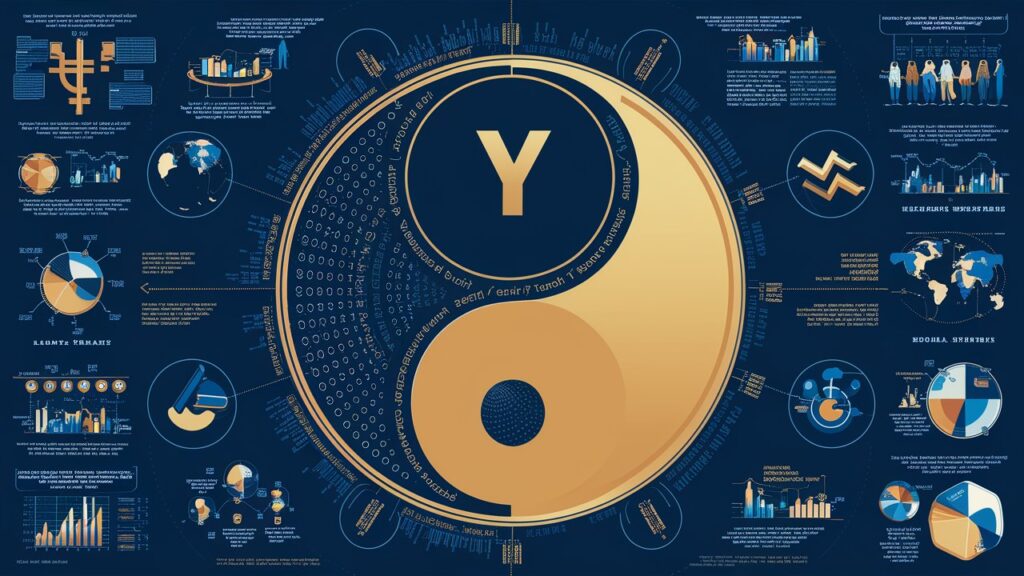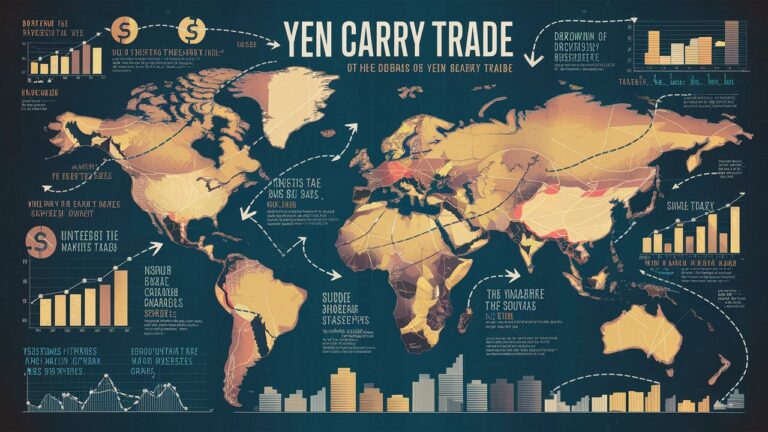Introduction
The yen carry trade has long been a cornerstone strategy in global financial markets, attracting investors seeking to capitalize on Japan’s persistently low-interest-rate environment. At its core, the carry trade involves borrowing funds in a low-yielding currency (like the Japanese yen) and investing in higher-yielding assets abroad, profiting from the interest rate differential. This strategy gained prominence in the 1990s and 2000s, fueled by the Bank of Japan’s ultra-loose monetary policies aimed at combating deflation. However, while the yen carry trade offers lucrative opportunities, it is fraught with risks, including currency volatility and sudden shifts in global risk sentiment. This article delves into the mechanics of the yen carry trade, explores its economic implications, and addresses key questions about its sustainability in an evolving financial landscape.
1. The Mechanics of the Yen Carry Trade
The yen carry trade operates on a straightforward principle: investors borrow yen at Japan’s near-zero interest rates, convert the borrowed funds into a higher-yielding currency (such as the US dollar or Australian dollar), and invest in assets like government bonds, equities, or real estate. The profit arises from the difference between the yield of the foreign asset and the cost of servicing the yen-denominated loan. For example, if an investor borrows ¥100 million at 0.1% annual interest and invests in US Treasury bonds yielding 4%, the net return before currency fluctuations is 3.9%.
Leverage amplifies returns but also magnifies risks. Many institutional investors use derivatives like currency swaps or futures to hedge against exchange rate movements, though hedging costs can erode profits. The trade thrives in stable or bullish markets but unravels during crises, as seen during the 2008 financial crisis when a rush to repay yen loans triggered a sharp appreciation of the currency.
2. Key Factors Influencing the Yen Carry Trade
a) Interest Rate Differentials
The viability of the yen carry trade hinges on the gap between Japan’s interest rates and those of other economies. When central banks like the Federal Reserve or Reserve Bank of Australia raise rates, the appeal of the carry trade grows. Conversely, global rate cuts narrow the differential, reducing profitability.
b) Global Risk Sentiment
The yen is considered a “safe-haven” currency, often strengthening during geopolitical tensions or market turmoil. When risk appetite wanes, investors unwind carry trades to repay yen loans, driving up its value and squeezing returns.
c) Bank of Japan (BOJ) Policy
The BOJ’s commitment to maintaining ultra-low rates through yield curve control (YCC) has been pivotal. Any shift toward policy normalization—such as raising rates or ending YCC—could destabilize the carry trade ecosystem.
3. Risks Associated with the Yen Carry Trade
a) Currency Risk
Exchange rate fluctuations are the primary risk. A sudden appreciation of the yen (e.g., due to a crisis) can erase profits or lead to losses when converting foreign gains back to yen. For instance, the yen surged 23% against the dollar in 2008, devastating unhedged positions.

b) Interest Rate Reversals
Unanticipated rate hikes by the BOJ or aggressive easing by other central banks can invert the interest rate differential, rendering the trade unprofitable.
c) Liquidity and Leverage Risks
In stressed markets, liquidity dries up, making it difficult to exit positions. Over-leveraged investors may face margin calls, forcing fire sales of assets.
d) Geopolitical and Macroeconomic Shocks
Events like trade wars, pandemics, or energy crises can trigger volatility, undermining the stability of carry trade returns.
4. The Global Impact of the Yen Carry Trade
a) Emerging Markets
The yen carry trade has historically funneled capital into emerging markets (EMs), boosting their currencies and asset prices. However, rapid reversals during risk-off episodes can destabilize these economies, as seen in the 1997 Asian Financial Crisis.
b) Developed Economies
In nations like Australia and New Zealand, carry trade inflows have supported real estate and equity markets. Yet, sudden outflows can exacerbate economic downturns.
c) Financial Market Interconnectedness
The trade underscores the interconnectedness of global markets. A surge in yen repatriation can trigger cascading sell-offs in global assets, amplifying systemic risks.
5. Strategies for Navigating the Yen Carry Trade
a) Diversification
Investors should spread exposure across multiple currencies and asset classes to mitigate concentration risk.
b) Active Hedging
Using options or forward contracts to hedge currency risk, though costly, can protect against adverse moves.
c) Monitoring Macro Indicators
Tracking central bank policies, inflation trends, and geopolitical developments is critical to anticipating shifts in the trade’s profitability.
d) Stress Testing
Simulating scenarios like yen rallies or rate hikes helps investors assess portfolio resilience.
Conclusion
The yen carry trade remains a double-edged sword: a potent tool for generating returns in calm markets but a perilous gamble during turbulence. Its sustainability depends on Japan’s monetary policy trajectory, global interest rate trends, and the broader risk environment. While technological advancements and sophisticated hedging tools have made the trade more accessible, investors must remain vigilant to its inherent risks. As central banks worldwide navigate inflation and growth challenges, the yen carry trade will continue to play a pivotal—and unpredictable—role in shaping global capital flows.
Frequently Asked Questions (FAQs)
Q1: Why is the yen the preferred currency for carry trades?
The yen’s status stems from Japan’s prolonged low-interest-rate environment, driven by decades of deflation and aggressive BOJ easing. This makes borrowing costs exceptionally cheap compared to other major currencies.
Q2: What are the main risks of the yen carry trade?
Currency volatility, sudden BOJ policy shifts, and global risk aversion are key risks. Unhedged positions can suffer heavy losses if the yen appreciates rapidly.
Q3: Has the yen carry trade caused any historical financial crises?
While not the sole cause, large-scale unwinding of carry trades exacerbated the 1997 Asian Crisis and 2008 Global Financial Crisis by triggering capital flight and currency instability.
Q4: How does the carry trade affect Japan’s economy?
Persistent outflows from carry trades can weaken the yen, boosting exports but raising import costs. Conversely, yen repatriation during crises strengthens the currency, complicating recovery efforts.
Q5: Can retail investors participate in the yen carry trade?
Yes, through forex platforms or ETFs, but retail investors face higher risks due to leverage and limited access to sophisticated hedging tools.
This comprehensive exploration equips readers with a nuanced understanding of the yen carry trade, balancing its opportunities with the caution it demands.
